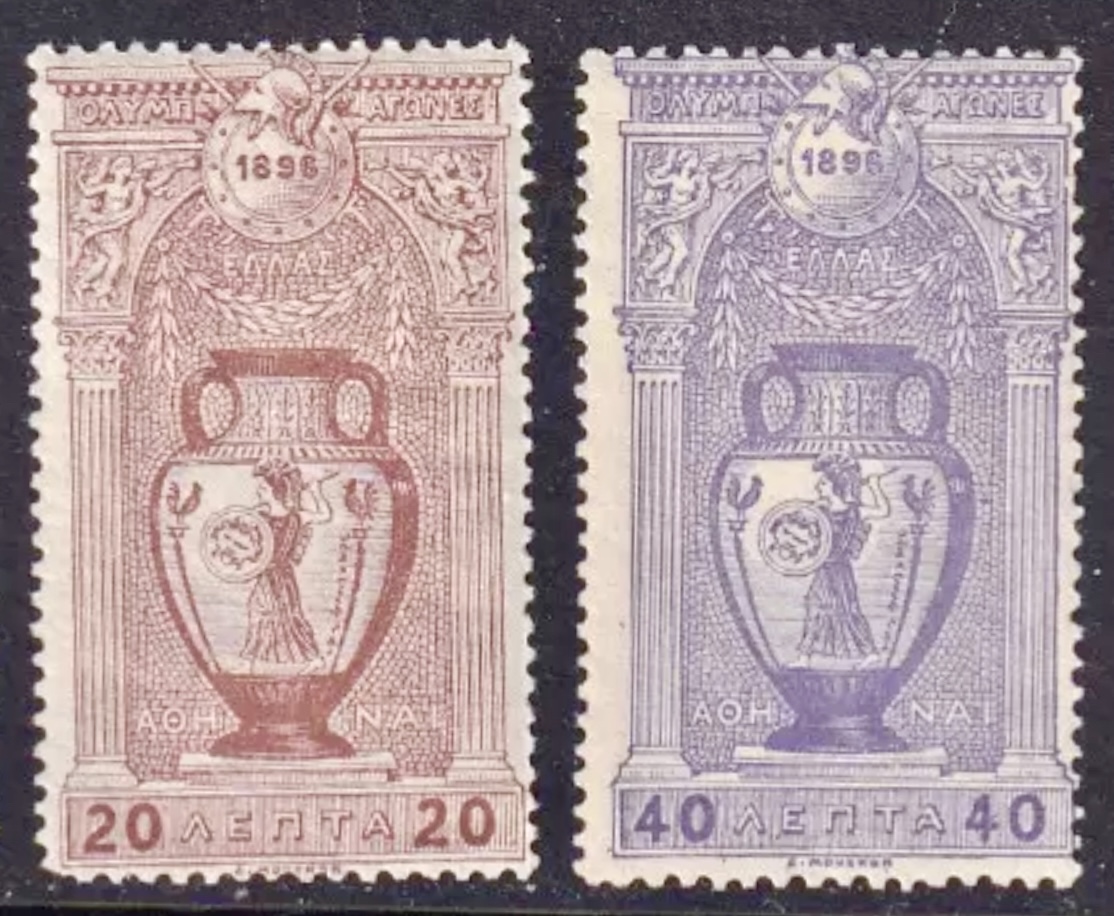The very first pottery stamps in the world
Greece
March 25th, 1896
Summer Olympic Games 1896 - Athens
The first modern Olympic Games were held in Athens in April 1896, and Greece issued a series of twelve stamps to mark the occasion. The designs, by Professor Gillieron, were based on ancient Greek art and architecture connected with the games.
20/40 leptons stamp feature the Panathenaic amphora.
Panathenaic amphoræ were used to contain the oil extracted from sacred olive trees, which was then given to the winners of the Panathenaic games, instituted in Athens under Pisistratus around 566 B.C. Widespread throughout Attica, they are also found in the parts of the ancient world where Greek influence was most keenly felt, as in Etruria. On the main face, from the sixth century B.C., there always appears the goddess Athena in the typical attitude of Pròmachos, flanked by two small columns topped with a cockerel, an animal that in this case alludes to competition on account of its combative temperament, and the traditional inscription ton Athenethen athlon (of the Athens contests). On the other side there is instead a representation of the speciality to which the prize refers, which is in this case the pentathlon, a mixed competition that included jumping, running, discus and javelin throwing, and wrestling.
For around two centuries, from the sixth to the fourth B.C., this type of vase was produced conserving the same shape and perpetuating the black-figure technique.

